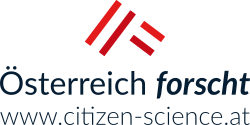
ABOL-BioBlitzes
The lack of sustainability in human activity is leading to the global destabilisation of our natural systems. The resulting biodiversity and climate crises require a transformation to an environmentally sustainable society. However, the expertise in the field of taxonomy required for this transformation is often only shared by a few experts. This leads to a bottleneck in biological species knowledge, where, depending on the group of organisms, often only a few citizen scientists have the expertise to identify species. The ABOL-BioBlitzes have set themselves the goal of making these rare competences available to society.
Correct species identification of organisms is the basis for recording biodiversity and its changes. Traditional identification using morphological characteristics is very time-consuming and requires many years of experience and expertise; as a result, very many species can only be reliably identified by a small number of people. DNA barcoding is an innovative, resource-efficient form of species identification. DNA barcodes are standardised, species-specific DNA sequences from clearly identified individuals and thus serve as comparative references for DNA-based identification. The ABOL BioBlitzes help to populate the "digital identification book" (reference database) on the basis of DNA barcodes. This makes it possible to identify species even from tissue residues, larvae or environmental and mixed samples, such as a water sample from a pond. DNA barcoding helps to better fulfil the increased monitoring requirements (e.g. insect mortality, climate change). Scientists around the world are working on filling the reference database. The ABOL initiative (Austrian Barcode of Life) coordinates the creation of DNA barcode references for animals, plants and fungi that occur in Austria and ensures that this data is made available to the general public. ABOL works together with many national research institutions and private experts and is also networked with European and international initiatives.
With the ABOL-BioBlitzes everyone has the opportunity to help building up this reference database! The ABOL BioBlitzes are (usually) linked to annual "Biodiversity Days", which are organised by national parks, biosphere reserves or associations and take place in various regions of Austria. Biodiversity experts and scientists meet at these events to record biodiversity in a defined area within 24 hours. As part of the ABOL BioBlitz, species are not only documented, but also genetically analysed, i.e. DNA barcodes are created. Tissue samples of organisms that have been collected and identified by experts are handed over to the ABOL team, which initiates the creation of the DNA barcode. The corresponding data is then published in the international open database "Barcode of Life Data System" (BOLD).
The ABOL BioBlitz not only fills the reference database as a basis for future monitoring, but also secures the knowledge acquired by private and institutional experts in the long term. The results of the ABOL BioBlitz are published in a scientific journal approximately every two years, with all participants being able to contribute.
What happened so far
The first ABOL BioBlitz took place in 2019 at the GEO-Tag der Natur in the Biosphere Reserve Nockberge. Since then, 4-6 ABOL-BioBlitzes followed each year throughout Austria. A summary of the results was published in the journal Acta ZooBot with the collaboration of many ABOL BioBlitz participants. Forty experts collected 2,172 individuals or 1,040 species. DNA barcodes of most individuals could be generated and are available to national and international researchers and nature conservation experts in the barcoding reference database BOLD. The results of all previous ABOL BioBlitzes are summarized on the ABOL homepage, where reviews of each ABOL BioBlitz can also be found on the ABOL blog.
If you don't want to miss future ABOL BioBlitzes, you can also subscribe to the ABOL newsletter!
This project fulfils version 1.1 of the quality criteria for citizen science projects on Österreich forscht.
Download attachments:
- animals

